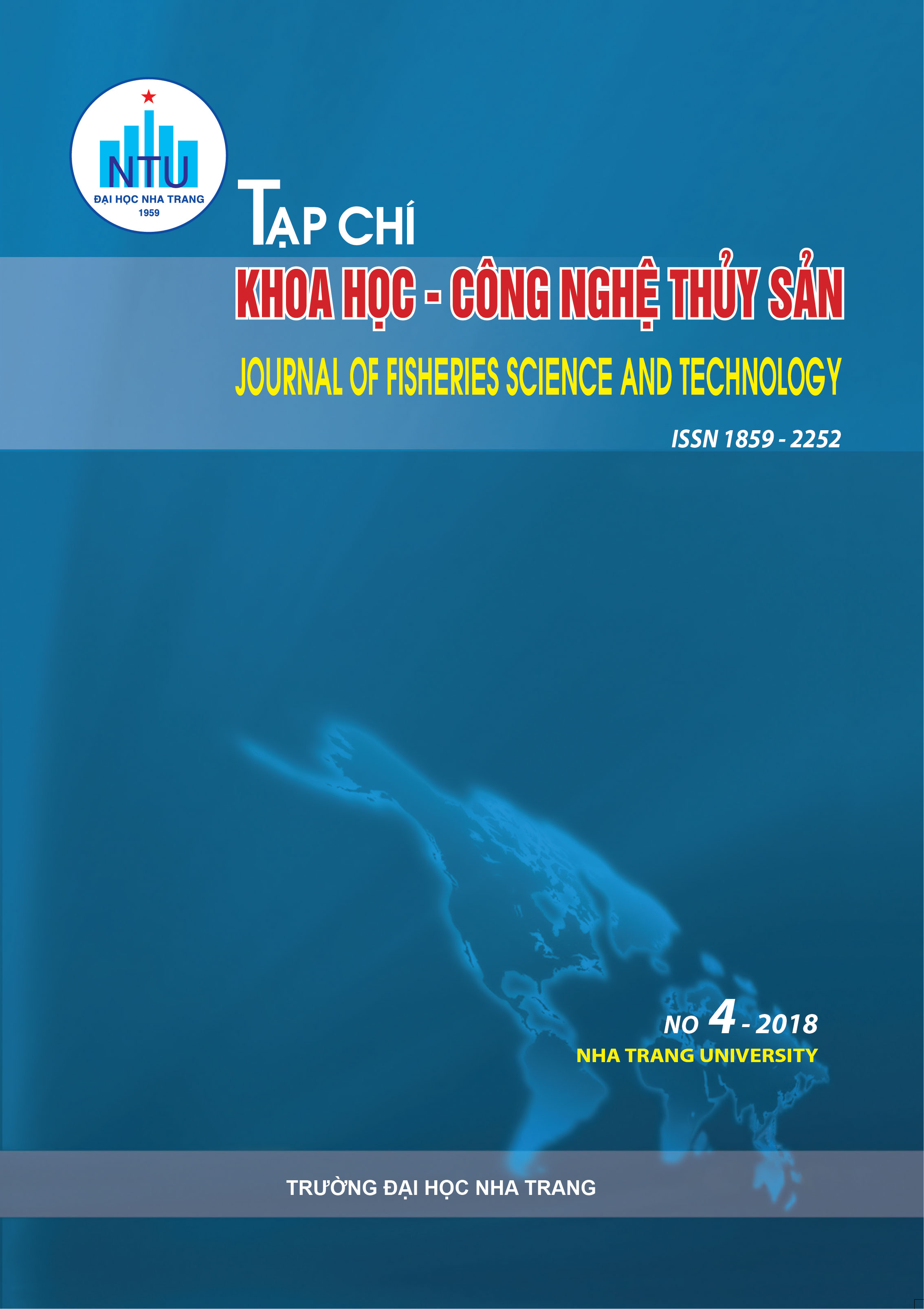##plugins.themes.huaf_theme.article.main##
Abstract
The experiment was conducted to determine adaptability of rabbitfish Siganus lineanus under rearing condition that similar a closed earthen pond and to assess the effect of stocking density on fish growth performance and the environmental quality. Rabbitfish (5.7 g) were stocked in 3 treatments with different densities, including low density (LD) (7 fish.m-2), medium density (MD) (14 fish.m-2), and high density (HD) (21 fish.m-2) with four replicates per treatment. After 8 weeks of experiment, survival was 100% in LD and MD treatments, while high mortality occurred in one replicate of HD treatment. There was no significant difference in growth performance of rabbitfish reared at different densities. The fish biomass was significantly lower in the LD treatment than those in other treatments whereas there was no significant difference between MD and HD treatments. Some water and sediment parameters such as turbidity, Chl a, TAN and SRP were significantly higher in HD than those in LD treatment. The environmental variation increased following the increase of stocking density that led to phytoplankton bloom in the HD treatment at the end of the experiment. Our results suggested that increasing stocking density from 7 to 14 fish.m² does not decrease fish growth and the environmental quality, while increases fish final biomass. High survival and good growth rate of rabbitfish S. lineatus illustrate that rabbitfish is a suitable candidate for reareing in closed earthern ponds.
Keywords: Siganidae, closed system, growth, environment, biomass

